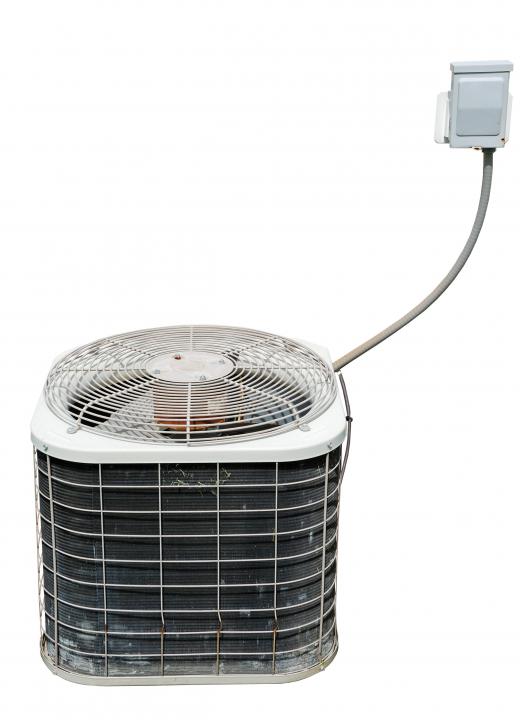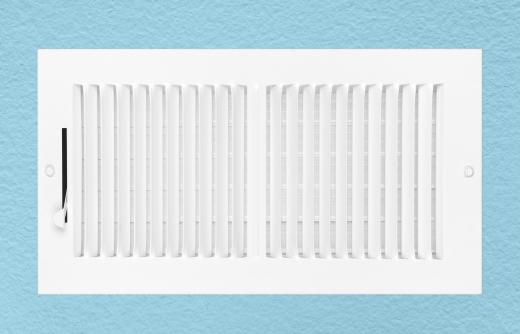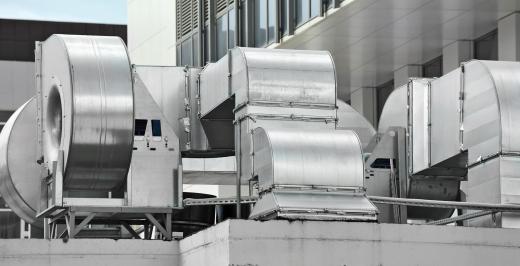An air conditioning duct is a type of pipe or tunnel that is used to distribute air throughout a structure. Systems of ducts, known as ductwork, are a central component of a building's heating, ventilation, and air conditioning (HVAC) system. In most systems, only one set of ductwork is present, which is used to transport cool air in the summer and heated air in the winter, along with as air required for general ventilation needs. Air conditioning duct is used only with central air units, and is not required for homes that rely on split systems or ductless air conditioning.
To understand the function of air conditioning duct, one must first understand how a central air system works. First, a system of intake grilles or louvers pulls fresh air from outside into the central air unit. The air is cooled, then blown into a duct system, where it is distributed to various rooms. The cool air enters the rooms through air terminal units installed at the end of each duct line, which generally take the form of diffusers or grilles. This network of ducts that transport cool air from the unit to each room is called the supply ductwork.

Of course, to maintain a relatively stable air pressure in each room, some air must be removed to make way for this new cool air supply. A second set of ducts, called the return ductwork, is used to transport warmer air from each room back to the air conditioning unit for cooling. The air enters the return ducts through exhaust grilles or registers in each room. It travels back to the unit, where it is easier cooled for redistribution, or released to the outside of the home and exchanged for fresh air.

Air conditioning duct is selected based on its size, shape, and material. The size of a duct is based on air pressure in the home, the type of HVAC equipment being used, and the cooling needs of occupants. Round ducts are considered to be the most efficient, allowing a greater volume of air movement per unit of duct, but despite this they are rarely used. Instead, builders rely on square or rectangular ducts, which fit more easily into tight ceiling and wall cavities. Spiral duct, which resembles corrugated pipe, is the least efficient shape of the three, but is often chosen for its appearance when the duct will be left exposed.

There are three basic materials used to manufacture air conditioning duct. Galvanized steel has historically been the most widely used due to its strength and resistance to rust and corrosion. Though it is still the material of choice, steel is associated with high levels of air leakage, which can leave a system unbalanced. Flexible ducts made from plastic-coated wire frames are commonly used on short runs or at transition points in order to reduce pressure losses. Fabric ducts are growing increasingly popular due to their quick installation, even air distribution, and pleasing appearance.

When metal duct is used, it is often insulated to help reduce noise and minimize condensation. Insulation can also help keep the ducts from absorbing air in the home, which leads to uneven temperature levels and wasted energy. Many metal ducts come with built-in insulation along the inside walls. Air conditioning ducts without integral lining are often wrapped with fiberglass or similar types of insulation. This added duct wrap can be problematic for installation in tight spaces, however, as it can increase the size of the duct by several inches on each side.
